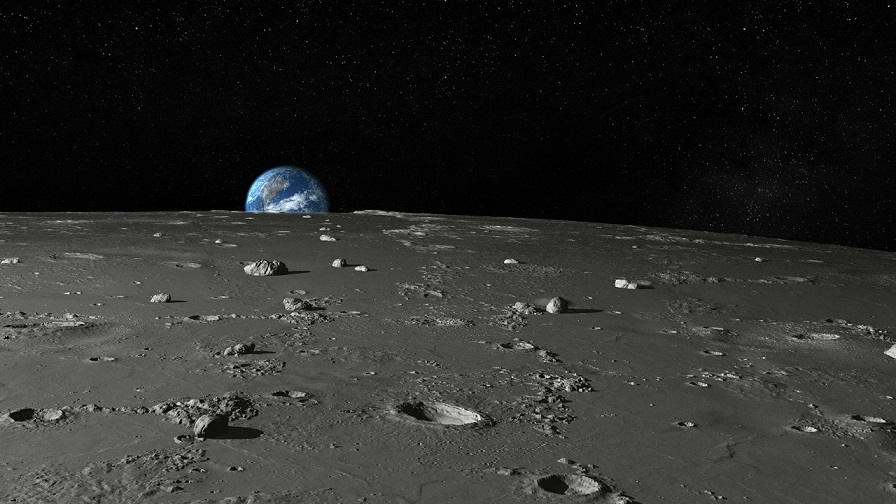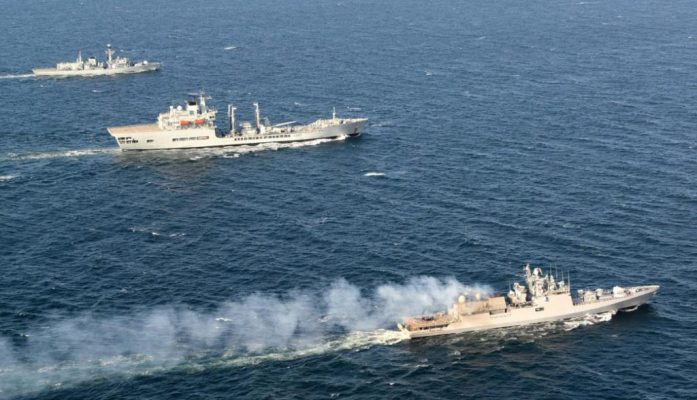
By Ritu Mousumi Tripathy
With humanity's ever-increasing quest for space exploration reaching newer heights, space race in the present century has taken unprecedented turns. From developing reusable space launch vehicles to planning inter-planetary missions to set up colonies on the Moon and eventually on Mars, the space faring nations are surely aiming for the farthest in the infinite Universe.
While NASA is back in the race by successfully launching its latest Mars lander mission, InSight (Interior Exploration using Seismic Investigations, Geodesy and Heat Transport) this month, the US space agency has also started work on its "lunar gateway" programme, which aims at setting up an orbital outpost in the vicinity of the Moon in the 2020s. The orbital outpost will help extend human presence in deep space, especially in Mars, hopes NASA.
The other big power, China, too has recently listed out its deep space exploration missions over the next decade, including a mission to Mars and a probe to asteroids for mining purposes and more ambitiously, even using them as possible space stations in future for manned deep space missions.
NASA, for its part, has also spelt out an asteroid haunting mission, "Psyche". Scheduled for launch in 2022, the spacecraft would arrive at the metallic asteroid, 16 Psyche, in 2026 for an in-depth study of one of the ten most massive space rocks lying in the asteroid belt of our Solar System.
Joining the bandwagon of such ambitious deep space exploration missions in the 21st century is India. The country has already made remarkable global imprint by successfully sending a mission to Mars in its maiden attempt. The MoM or Mangalyaan spacecraft, launched in November 2013, entered the orbit around the Red Planet on its very first attempt, on September 24, 2014, creating a world record and placing India in an elite club of countries -- US, Russia and ESA (Europe) -- having sent probes to Mars successfully.
The ISRO-led mission has already outlived its initial lifespan of six months, and is still going “strong”. The space agency ISRO continues to collect vital data and information from all five payloads of the Martian spacecraft.
Before the Mars mission, India has already tasted success in its Chandrayaan-1 lunar mission which proved the existence of water on the Moon's surface.
Now, the country is preparing for yet another crucial mission – the Chandrayaan-2. This second lunar exploration mission is going to be a fully indigenous one comprising of an orbiter, lander and a rover.
Chandrayaan-2, set for launch in October-November 2018, will be ISRO's first inter-planetary mission to "soft-land" a lander/rover on a celestial body. The probe is expected to reach the lunar orbit in a month or two.
The six-wheeled rover, which will move on the lunar surface after getting detached from the lander, will send back important scientific data and information which will be used for understanding lunar topography, mineralogy, elemental abundance, lunar exosphere and signatures of hydroxyl and water-ice, according to ISRO.
What would make this indigenous mission all the more interesting and equally challenging is "an ancient site" at which the spacecraft's lander would set its foot to explore the lunar surface. It would be the Moon's south pole which is a "very tricky area" with rocks formed a million years ago, according to ISRO Chief K Sivan. This could possibly help in understanding the origin of our Universe.
Moon's south pole has been of immense interest to scientists and explorers as it is believed to be cradling potential resources such as water ice and hydrogen. The south pole contains areas of permanent darkness where sunlight never reaches the bottom. The craters formed in this permanently shadowed region thus are quite unique.
Most of the lunar missions in the past have explored the area around the equator of the Moon.
NASA too had sent a fast-track, low-cost mission, LCROSS (Lunar Crater Observation and Sensing Satellite), in June 2009 to crash-land near a crater, Cabeus, in the Moon's south pole region. Incidentally, ISRO's Chandrayaan-1 mission had just discovered the presence of water molecules on the lunar surface around that time.
The US's LCROSS mission too found evidence of presence of water in the south pole region of Moon with NASA stating that the concentration and distribution of water and other substances in that part required further analysis.
With the Chandrayaan-2 now getting ready to explore that region yet again after nearly a decade, space scientists and explorers world-over would be hopeful of getting fresh clues as regards to the presence of water and other essential resources in the area which could pave the way for setting up lunar bases in future.
If ISRO achieves success in this critical mission, it will be yet another remarkable feat for India as only three other countries – the US, Russia and China – have been able to "soft-land" their spacecraft on the lunar surface previously.
But most importantly, India will surely take a major leap forward in its journey towards the more ambitious human space flight programmes in the foreseeable future.
 Previous Article
Previous Article Next Article
Next Article













The Indian Air Force, in its flight trials evaluation report submitted before the Defence Ministry l..
view articleAn insight into the Medium Multi-Role Combat Aircraft competition...
view articleSky enthusiasts can now spot the International Space Station (ISS) commanded by Indian-American astr..
view article